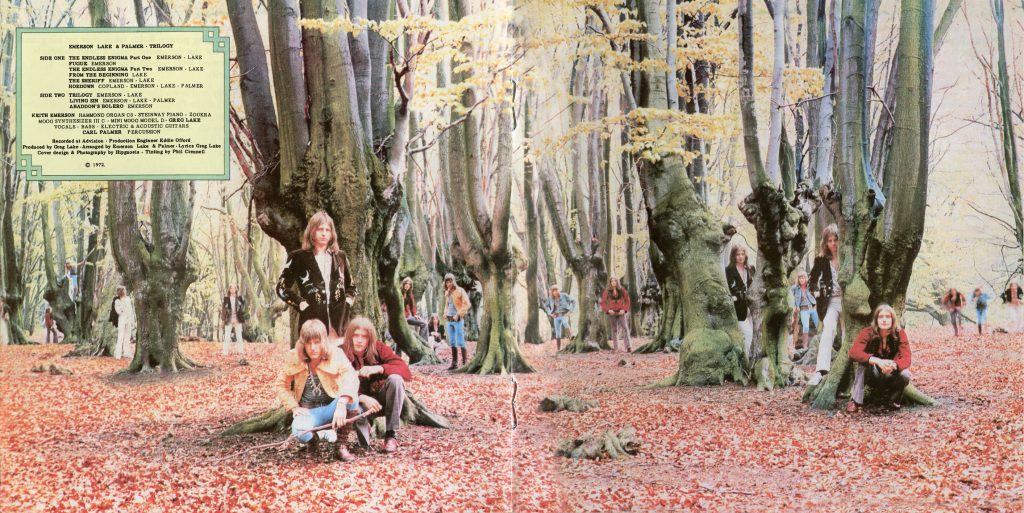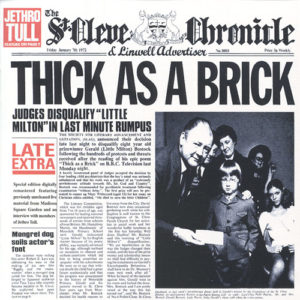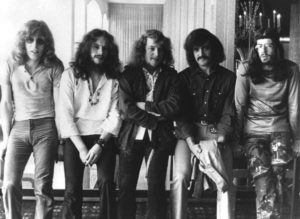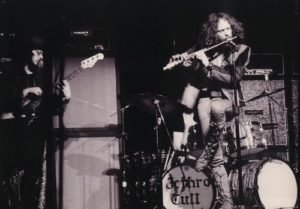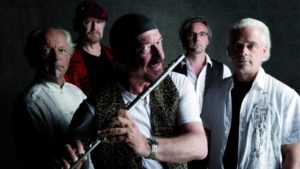Emerson, Lake & Palmer | Trilogy | A 45th Anniversary Retrospective
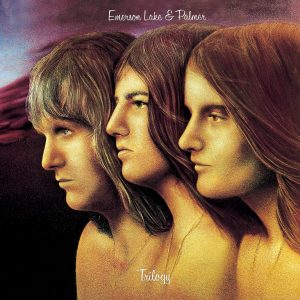
Emerson, Lake & Palmer | Trilogy | A 45th Anniversary Retrospective
In Loving Memory of :
Keith Noel Emerson – (November, 2nd, 1944 – March, 11th, 2016)
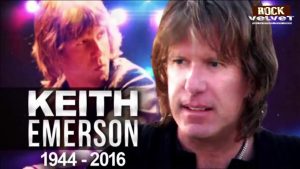
Gregory Stuart ‘Greg’ Lake – (November, 10th, 1947 – December , 7th, 2016)
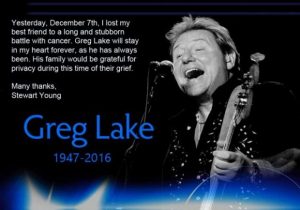
Label: Island Records
Release Year: 1972
Country: United Kingdom
Genre: Progressive Rock
Band Members
Keith Emerson – Hammond organ C3/Steinway Piano/Moog Synthesiser III-C/Mini-Moog Model D/Zurna (listed as a “Zoukra”)
Greg Lake – Vocals/Bass/Electric and Acoustic Guitars
Carl Palmer – Drums/Percussion
Track Listing
Side One
The Endless Enigma (Part One) – Keith Emerson, Greg Lake 6:41
Fugue -Keith Emerson 1:56
The Endless Enigma (Part Two) – Keith Emerson,Greg Lake 2:03
From the Beginning – Greg Lake 4:16
The Sheriff -Keith Emerson,Greg Lake 3:22
Hoedown – Aaron Copland (Arrangement). Keith Emerson, Greg Lake, Carl Palmer 3:47
Side Two
Trilogy – Keith Emerson, Greg Lake 8:54
Living Sin -Keith Emerson,Greg Lake, Carl Palmer 3:13
Abaddon’s Bolero – Keith Emerson 8:08
Contact Links
Emerson, Lake & Palmer Band
Emerson Lake & Palmer Official Website
Emerson Lake & Palmer Official Facebook Page
Keith Emerson
Keith Emerson Official Website
Keith Emerson Official Facebook Page
Keith Emerson Official Twitter
Greg Lake
Greg Lake Official Facebook Page
Carl Palmer
Carl Palmer Official Facebook Page
Carl Palmer Official YouTube Channel
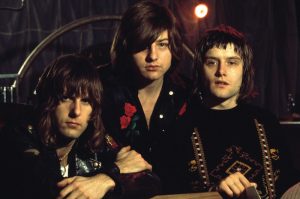
Keith Emerson, Greg Lake, Carl Palmer were all well known musicians in their own right long before they created what would be progressive rock’s first ‘Supergroup’ ELP or Emerson Lake and Palmer. ELP or Emerson Lake & Palmer would also become one of progressive rock’s Big 5 joining the ranks of Yes, Genesis, King Crimson and Jethro Tull. Keith Emerson would come to the band from The Nice, Greg Lake from King Crimson and Carl Palmer from Atomic Rooster by way of The Crazy World of Arthur Brown. Emerson Lake & Palmer would form in London, UK in 1970. Emerson Lake & Palmer would go on to become RIAA (Recording Industry Association of America) with nearly 48 million + albums sold. After forming in early 1970, the band came to prominence following their performance at the Isle of Wight Festival in August 1970. In their first year, the group signed with Atlantic Records and released Emerson, Lake & Palmer – 1970 and Tarkus -1971, both of which reached the United Kingdom top five. The band’s success continued with Pictures at an Exhibition – 1971. However it was the bands third studio release and fourth album overall Trilogy – 1972 that many believe the band really came into their own as a powerhouse in progressive rock and rock in general. Where most of their contemporaries were totally leveled with the strictest of scrutiny by the progressive rock purists elitist notions, Emerson, Lake & Palmer managed to avoid anything super critical.
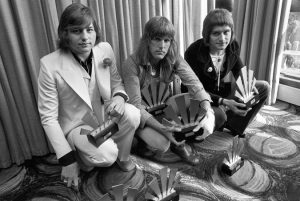
Emerson Lake and Palmer’s Trilogy was the band’s fourth album. More surprising it was the third album in 18 months at the time of its release. Trilogy would definitely secure the band on the mountain top of progressive rock and rock in general. Some believe without Trilogy placing the band on the mountain top, that the monumental monterous success of Brain Salad Surgery – 1973 would of not been possible. The Trilogy album and later Brain Salad Surgery would fit the band so firmly on the apex of the mountain where the band were able to place a flag for themselves on the mountain top. So what was it that about Trilogy that allowed the band to be such standard bearer’s within the progressive rock genre? Over the course of this retrospective we will attempt to bring light to this subject.
The musical landscape in progressive rock in 1972 was totally loaded with talent coming out of the United Kingdom. Some even believe 1972 was a ‘Ground Zero Year’ for progressive rock. Among the milestone albums that came out of 1972 from the United Kingdom and elsewhere in Europe were Yes – Close To The Edge, Jethro Tull – Thick As A Brick, Genesis – Foxtrot, Caravan- Waterloo Lily, Gentle Giant – Octopus, Pink Floyd – Obscured by Clouds, Uriah Heep – Demons And Wizards and Emerson, Lake & Palmer – Trilogy. While Brain Salad Surgery – 1973 was their best selling album and saw the band at its peak zenith, it was Trilogy – 1972 that boosted the band to the initial summit where they went from just a ‘Progressive Supergroup’ to a band that transcended the typically cliched ‘Progressive Rock’ banner.
Trilogy is the third studio album by the English progressive rock band Emerson, Lake & Palmer, released in July 1972 on Island Records. The cover, designed by Hipgnosis, depicts the band attached at the shoulders, while the interior of the original gate-fold sleeve features a photo montage of the three in Epping Forest. Trilogy increased ELP’s worldwide popularity, and included “Hoedown”, an arrangement of the Aaron Copland composition, which was one of their most popular songs when performing live. We are about to revisit Trilogy on a song by song basis. Without over analyzing the album too much or beating the horse to death we will explore how every composition and song made Trilogy the masterpiece it is.
The Endless Enigma (Part’s I & 2)
A two-part showcase for the com positional and improvisational abilities of Emerson Lake and Palmer, “Endless Enigma” holds so many musical wonders that it’s easy to become consumed with the work of Keith Emerson and Greg Lake.
Keith Emerson, after all, starts out spooky and dark, then rushes forward into a thunderous outburst while Greg Lake — his vocal instrument at the peak of its powers — moves from sweet reverie to foundation-shaking retorts. And that’s just their co-written Part 1. Keith Emerson then contributes a roughly two-minute fugue that joins the two segments, as “Endless Enigma” comes crashing to a resounding conclusion.
Go back, though, and pay closer attention to Carl Palmer. He’s just as adept at the stick-splintering crashes needed to propel the song to that big finish as he is the song’s angular jazz segments as he is the bass-drum heartbeat that opens “Endless Enigma” — years before the effect became central to albums like Dark Side of the Moon from Pink Floyd and A Passion Play by Jethro Tull. 2112 & Moving Pictures by Rush and areas of both Images & Words and Awake by Dream Theater.
The Fugue
This one is a Classical Music Tour De Force. This comes on beautifully and seamlessly from The Endless Enigma Part 1 and serves as a beautiful classical composition to bridge into The Endless Enigma Part 2. While some people will see this as a filler on the album, some will not. There is a very intended purpose for The Fuge. Keith Emerson does a great job on piano to set The Fuge up to smoothly and seamlessly transition into The Endless Enigma Part 2. You can hear some of The Fuge’s last legacy in Dream Theater’s Jordan Rudess, especially on the Dream Theater side project Liquid Tension Experiment 1 & 2 and Feeding The Wheel and The Road Home.
The Endless Enigma Part 2
The band brilliantly composed this in such a way where it was both a continuation form The Endless Enigma Part 1 and seamlessly transitioned off The Fuge. This was handled by Keith Emerson tapping more into the bass chord progressions on keyboards. Then Greg Lake came on board with the bass guitar and Carl Palmer with his multi-dimensional approach to the drums met both Keith Emerson and Greg Lake in a more harmonious balance.
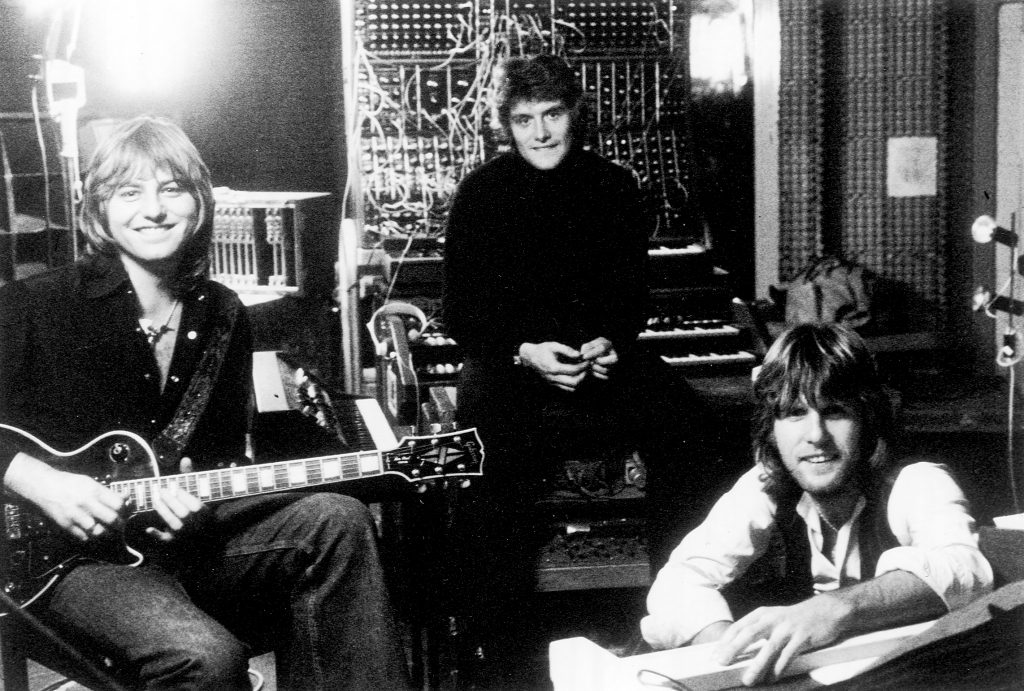
From The Beginning
ELP’s formula for successful albums seemed to be a concept covering several songs – a beautiful acoustic number by Greg Lake, and one comedy song per album. For Trilogy, “From the Beginning” was Greg Lake’s beautiful acoustic number that showed his acoustic guitar skills were right up there with his bass talents.
A heartfelt song of devotion, Lake claims that the inspiration for the song has left his memory.
Says Greg Lake:
“Very often lyrics simply come about simply because of the way one feels at a moment in time. There is no earth moving moment of divine inspiration or grand plan and I’m sure that was the case with this song. Although very young at the time I sometimes had moments of reflection and maybe also perhaps a feeling that I could be a better person, I think this was just one of those.”
From The Beginning continues to be a fixture on ‘Classic Rock’ radio to this day. What Lucky Man off the ELP debut in 1970 by putting the band on radio, From The Beginning off Trilogy kept the band in great standing on radio.
The Sheriff
In the opening drum solo on the track “The Sheriff”, Carl Palmer accidentally hit the rim of his tom-tom with a drumstick. He responded with the word “shit” which can be heard when listening carefully. “The Sheriff” ends with a honky tonk-type piano solo with Carl Palmer playing woodblocks. Lyrically this was a tribute to the American Old West. The track opens up as if a Mob were after a character. The drums of Carl Palmer simulate the knock of a door very eloquently. Keith Emerson remains very heavy on the Hammond Organ here.
Hoedown
“Hoedown” is a cover of “Hoe-Down” from the Rodeo ballet by Aaron Copland (1942). It became the opening song for both the Trilogy and Brain Salad Surgery tours. “Hoedown” is big, brash and showoffy — perfect for Emerson, Lake & Palmer, who adapted the piece for their 1972 album Trilogy. It’s the only song on the group’s third album not written by a member of the trio, but they have such fun with it (especially in concert) that it sounds like a natural fit on the LP. In a March, 11th, 2016 article Rolling Stone had this to say about ‘Hoedown’.
March/11/2016 Rolling Stone:
A showstopper that was actually a show starter for two tours, “Hoedown” was the first ELP adaptation of composer Aaron Copland, as brassy a show-off (in his way) as the trio itself. Keith Emerson began work on the piece after returning from a classical festival in Romania, so East European elements find their way into his rollicking organ and Moog arrangement alongside American folk tunes like “Shortnin’ Bread” and “Turkey in the Straw.” Emerson stumbled onto the track’s signature synth sound by chance: “We’d started working on that arrangement and then I hit, I don’t know what, I switched a blue button and I put a patch cord in there, but anyway, ‘whoooeee.'”
Trilogy
In a March, 11th, 2016 article on Ultimate Classic Rock, this is what they had to say –
The nine-minute centerpiece, and title track, to the trio’s highest-charting studio album takes almost three minutes to kick in. The lengthy intro features guitarist / singer Greg Lake getting his classical-music voice on while Emerson pounds away on piano keys. But then a swarm of synths ushers in a typically complicated time signature that eventually gives way to a percussion tour de force by drummer Carl Palmer.
Living Sin
Living Sin is the second song on Trilogy that was written by all three members of the band. Living Sin had a unusual avant garde vibe about it. This track definitely tapped into Greg Lake’s former band and sound in King Crimson, especially with the song 21st Century Schizoid Man. It had a very early proto thrash sensibility about it. Unlike most of the songs on Trilogy that started out and had a steady climatic build in them, Living Sin was a rare song that was to the point make their statement and move forward.
Abaddon’s Bolero
This is a instrumental ‘Tour De Force’. “Abaddon’s Bolero” sounds like a bolero turned into a march (in 4/4 rhythm rather than the usual 3/4). The song was originally titled Bellona’s Bolero after the goddess of war. A single melody containing multiple modulations within itself is repeated over and over in ever more thickly layered arrangements, starting from a quiet Hammond organ making a flute-like sound over a snare drum, and building up to a wall of sound – Maurice Ravel’s famous Boléro uses a similar effect. “Abaddon’s Bolero” is replete with overdubs. Almost every time an instrument comes in, another overdub follows.”. The over abundance of overdubs made the song very hard to perform live and the band only attempted it a few times. Despite the challenges due to multiple overdubs, the instrumental still served a purpose on Trilogy. This was like a soundtrack that would be played at the end of a movie when they roll the credits. This is the more appropriately arranged track to end Trilogy.
I would like to thank Ultimate Classic Rock and Rolling Stone for some of the information used in this article.
Not too many bands can say they got it right with one album let alone two albums. Trilogy and Brain Salad Surgery certainly reinforced the notion among fans and critics that Emerson, Lake & Palmer got it right on consecutive releases in the 1970’s. In 2018 I will be back here with a entire 45th Anniversary Retrospective of Brain Salad Surgery. Sadly as the date I prepare this, we have lost two thirds of Emerson, Lake and Palmer. Their legacy does live on through Carl Palmer. He has started Carl Palmer’s ELP Legacy. I am sure at some level we will be talking about Trilogy going forward 45 years from now and its pivotal influence and place in Rock History.
